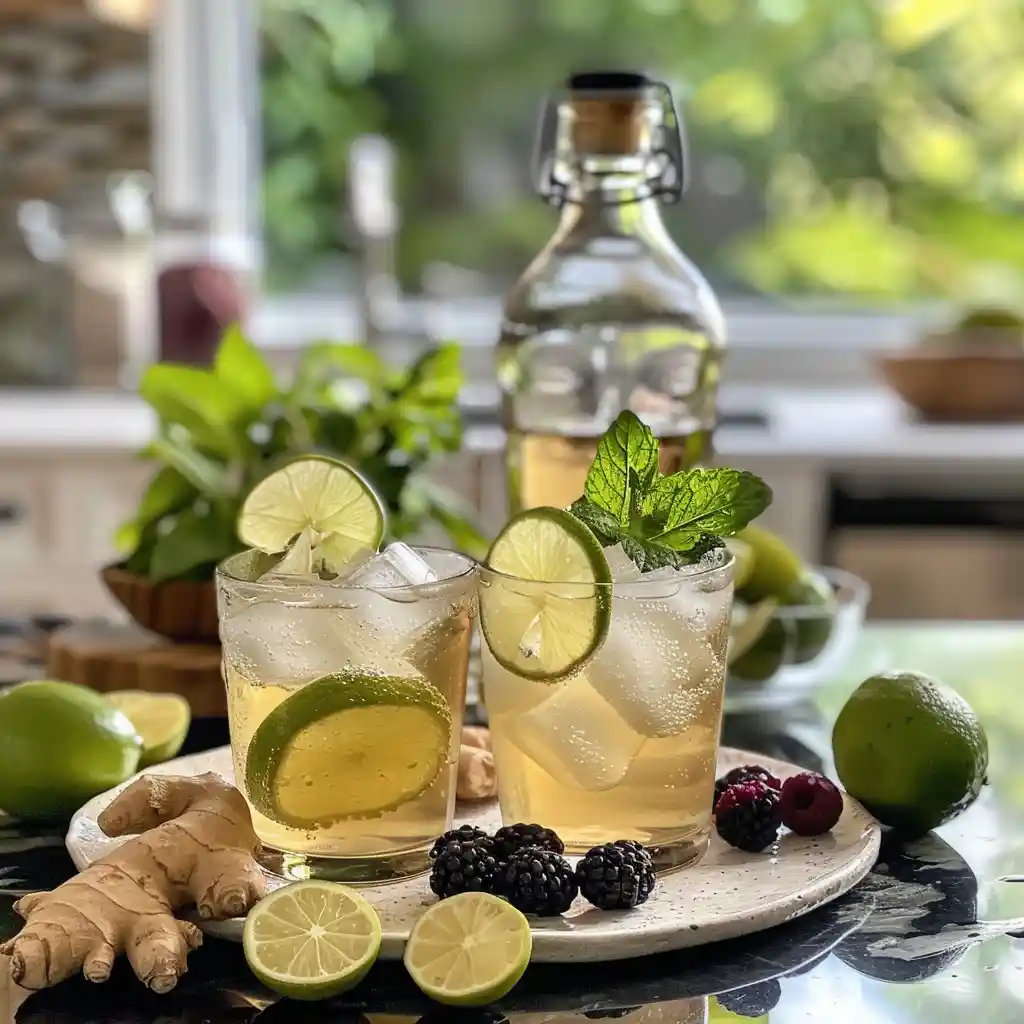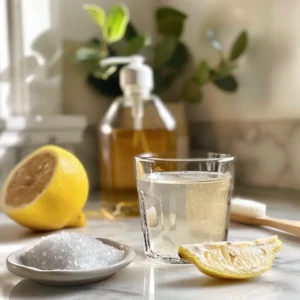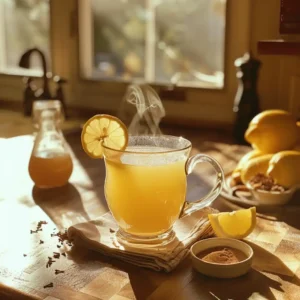Our probiotic soda journey started right in my kitchen, with a burping jar of ginger bug and a whole lot of curiosity. I wasn’t trying to mimic store-bought soda. I was searching for something alive—bubbly, gut-friendly, and refreshingly homemade. What I found was more than a drink; it became part of my daily rhythm. Light, fizzy, slightly tart, and made with simple, whole ingredients, this natural soda opened a door to a whole new world of wellness drinks that may support digestion and fit into even the busiest routines.
In this guide, I’ll walk you through everything I’ve learned about probiotic soda—from what it really is to how to make it at home, why it may support your gut, and how long it stays good in the fridge. Whether you’re new to fermentation or you’ve already brewed a kombucha batch or two, you’ll find approachable steps, tasty flavor ideas, and gut-health tips you can actually use.
Check out our Homemade Soda Guide if you’re curious about the basics before we dive deeper. Now, let’s bubble up some fizzy wisdom—starting with what exactly makes a soda “probiotic.”
Print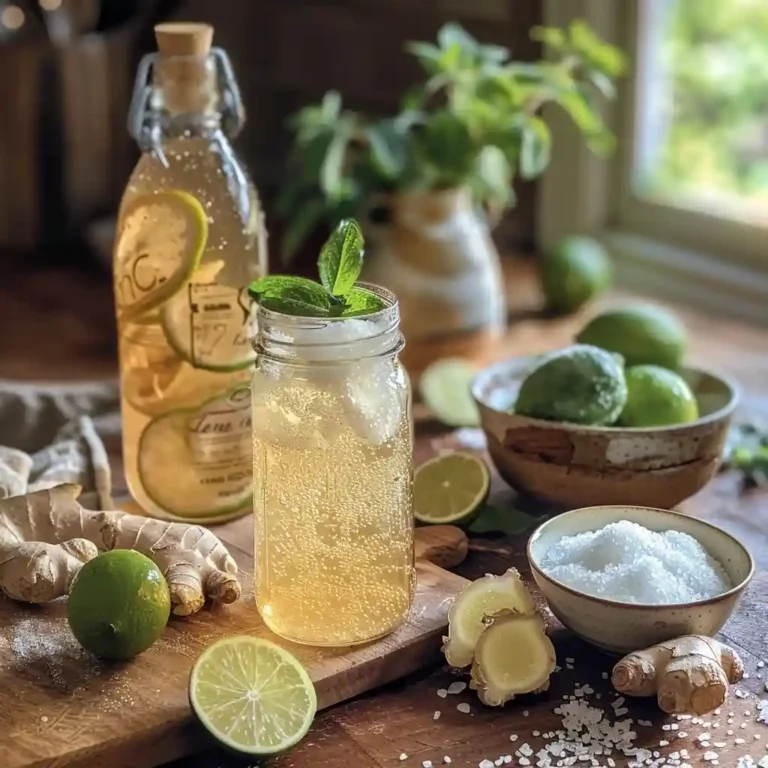
Calamansi Drink
A bright, zesty, and refreshing citrus drink made from fresh calamansi juice, perfect for warm days or wellness mornings.
- Total Time: 10 minutes
- Yield: 2 servings 1x
Ingredients
- 8–10 fresh calamansi fruits (or bottled calamansi juice)
- 1.5 to 2 cups cold or warm water
- 1–2 tablespoons honey, agave, or brown sugar (to taste)
- Optional: fresh ginger slices, turmeric, mint, or sparkling water
- Ice cubes (for iced version)
Instructions
- Slice and squeeze the calamansi fruits to extract juice. Strain to remove seeds and pulp.
- In a glass or pitcher, mix the juice with 1.5 to 2 cups of water depending on how strong you like it.
- Add your preferred sweetener and stir until fully dissolved.
- Serve chilled over ice for a cold drink, or use warm water and honey for a soothing hot version.
- Optional: Add ginger, turmeric, mint, or basil for variations. For a fizzy twist, use sparkling water instead of still.
- Store extra juice as concentrate in the fridge or freezer for later use.
Notes
You can freeze fresh calamansi juice in ice trays for easy single servings. For a flavor substitute, use a mix of lime and tangerine juice.
- Prep Time: 10 minutes
- Cook Time: 0 minutes
- Category: Drinks
- Method: Mixed
- Cuisine: Filipino
Nutrition
- Serving Size: 1 glass
- Calories: 40
- Sugar: 7g
- Sodium: 2mg
- Fat: 0g
- Saturated Fat: 0g
- Unsaturated Fat: 0g
- Trans Fat: 0g
- Carbohydrates: 10g
- Fiber: 0g
- Protein: 0g
- Cholesterol: 0mg
What Is Probiotic Soda and Why Is It Popular Now?
I still remember the first time I sipped homemade probiotic soda—it was a ginger-lime flavor, lightly carbonated, tangy, and unlike anything I’d tried before. It wasn’t just tasty. It felt alive. Unlike commercial sodas packed with artificial flavors, this version was fermented and crafted with purpose. But what exactly is probiotic soda?
At its core, probiotic soda is a naturally carbonated drink made by fermenting sugar and beneficial bacteria using a starter like ginger bug, whey, or water kefir. As these friendly microbes digest the sugars, they produce bubbles and create a living drink that may support gut health. It’s a fizzy beverage, sure, but one that brings real function to the table—without preservatives, corn syrup, or synthetic additives.
What Makes a Soda “Probiotic”?
For a soda to be truly “probiotic,” it has to contain live cultures. These are the helpful bacteria that may aid digestion and maintain a healthy gut environment. Unlike pasteurized drinks, where heat kills off these organisms, probiotic soda is often raw or lightly fermented so that the good stuff stays alive. I like to use ginger bug because it’s easy to make from scratch and adapts well to fruits, herbs, and spices.
Traditional Fermentation vs. Commercial Versions
There’s a world of difference between the probiotic soda you make at home and the shelf-stable versions you might find in stores. While some brands do sell raw probiotic sodas, most commercial drinks are pasteurized or rely on isolated strains added after processing. These aren’t bad per se, but they often lack the diversity of microbes found in traditionally fermented drinks.
When you craft your own probiotic soda, you’re in full control—not just of the flavors, but of the fermentation time, sugar content, and bacterial richness. It’s not just a drink; it’s a living project that grows with you. And honestly? It’s a little addictive, in the best way.
Health Benefits of Drinking Probiotic Soda
When I started drinking probiotic soda, I wasn’t looking for a miracle—I just wanted something refreshing and gut-friendly. Over time, I noticed small shifts. My digestion felt smoother, I felt less bloated, and that afternoon soda craving got a healthy twist. It wasn’t a supplement, and it wasn’t magic. It was a small, tasty habit that gently supported my wellness.
How Probiotic Soda May Support Gut Health
One of the most talked-about reasons for drinking probiotic soda is the potential support it may offer your gut microbiome. These bubbly brews contain beneficial bacteria—often strains of lactobacillus—that naturally occur during fermentation. When consumed regularly, these living microbes may help balance your gut flora, which plays a major role in digestion and even your immune system.
While I can’t promise results, I can tell you this: drinking probiotic soda makes me feel lighter. It’s like my gut gets a gentle nudge in the right direction. Especially after a heavy meal, a chilled glass of homemade soda settles better than anything store-bought ever could.
Possible Boosts to Digestion and Immunity
Probiotic-rich drinks like probiotic soda may do more than just ease digestion. Some folks—including myself—notice less bloating, more regularity, and fewer cravings for sugary snacks. A steady intake of fermented drinks has been traditionally associated with improved digestion, which can indirectly support other systems like immunity and even mood.
Of course, it’s all about balance. I don’t overdo it. One glass of probiotic soda a day is enough for me. It fits into my routine without pressure—like a treat that happens to be good for me. Plus, I love experimenting with ingredients that are not only delicious but may also help soothe my gut, like ginger, mint, or turmeric.
Drinking probiotic soda has become one of those wellness habits I don’t have to force. It feels intuitive, refreshing, and rewarding in ways I didn’t expect when I first started making it. And best of all? It’s made right at home, by me, with real stuff I trust.
Core Ingredients in Probiotic Soda
Whenever someone asks me what’s in my probiotic soda, I smile because it always starts simple—but ends up deliciously complex. The beauty of making this drink at home is that you can tweak it to fit your taste, health goals, or just what you’ve got in the pantry. But let’s start with the essentials.
Fermenting Agents: Whey, Water Kefir, or Ginger Bug
At the heart of every probiotic soda is a fermentation starter. I’ve experimented with all three: whey, water kefir grains, and ginger bug. My favorite? Ginger bug, hands down. It’s made from fresh ginger, sugar, and water, and it ferments in just a few days. It’s incredibly versatile and gives the soda a zesty, effervescent kick.
Whey works too—especially if you’re coming from a homemade yogurt batch. It adds a tangy depth. Water kefir is another strong option, full of probiotic cultures, and results in a clean, slightly sweet base. No matter which starter you choose, the fermentation process is what transforms your blend into a living, breathing probiotic soda.
Flavorful Add-ins: Herbs, Fruits, and Sweeteners
Now comes the fun part—flavor. I’ve made probiotic soda with everything from strawberries and basil to lemon-lavender and cinnamon-pear. Fresh fruit provides natural sugars and vibrant flavor, while herbs give it a soft aromatic edge. Think mint, hibiscus, rosemary, or even turmeric for a little anti-inflammatory flair.
As for sweeteners, I stick with organic cane sugar or honey. Don’t worry—the sugar isn’t for you; it’s food for the bacteria. By the time your probiotic soda is fully fermented, most of the sugar has been consumed, leaving behind just a hint of natural sweetness.
With these ingredients, the possibilities are nearly endless. I treat each batch as a small experiment—testing flavors, adjusting fermentation time, and watching the bubbles come to life. The best part? It’s all nourishing, simple, and built with ingredients I know and trust.
How to Make Probiotic Soda at Home – My Foolproof Method
The first time I made probiotic soda from scratch, I didn’t expect it to work. I thought fermentation belonged in some lab—not my cluttered kitchen. But once I saw those bubbles and tasted that tangy fizz, I was hooked. Making it isn’t just doable—it’s deeply satisfying. And best of all? You control every ingredient.
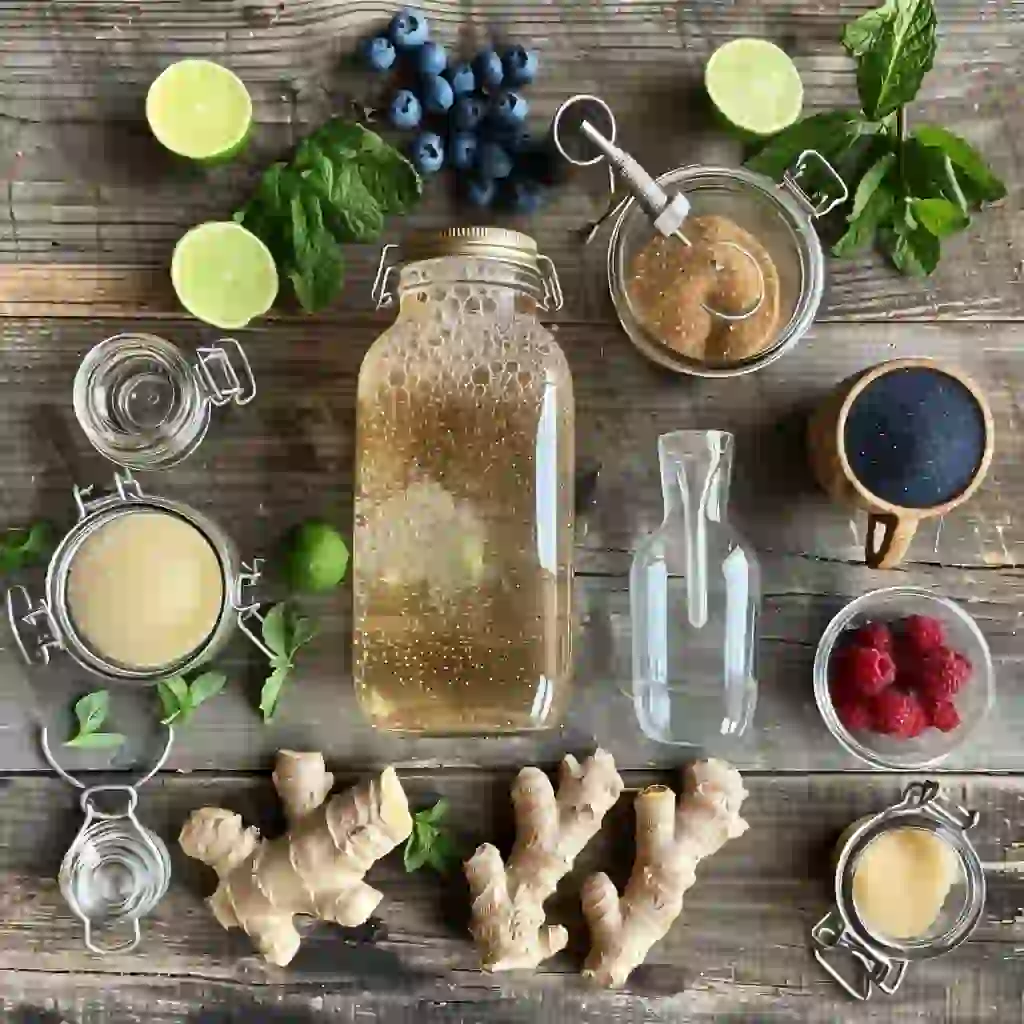
What You Need (Tools + Ingredients)
To start, you’ll need a few kitchen basics. Here’s what’s always on my counter during a probiotic soda brew:
- 1-quart glass jar with lid (or swing-top bottles for later)
- Clean funnel and strainer
- Saucepan and spoon
- Fresh fruit or juice (I love mango, berries, or lemon)
- Sugar (organic cane sugar or honey)
- Water (filtered, not chlorinated)
- A fermentation starter (ginger bug, water kefir, or whey)
That’s it. No special equipment, no weird powders. Just real food and a little patience.
Step-by-Step Process for Homemade Probiotic Soda
- Prepare your base: Combine fruit, water, and sugar in a saucepan. Heat just enough to dissolve the sugar and extract flavor, then cool completely.
- Add the starter: Once your liquid is room temperature, stir in your fermenting agent. This is what brings your probiotic soda to life.
- Ferment it: Pour the mix into a jar, seal it loosely, and leave it at room temperature for 1–3 days. You’ll start to see bubbles form—that’s the magic of fermentation.
- Bottle and carbonate: Once it’s a little fizzy, strain and transfer the liquid into swing-top bottles. Let it sit for another 1–2 days at room temp. This is where the real fizz builds up.
- Refrigerate and enjoy: Chill your probiotic soda before opening (trust me on this—unless you want a mini geyser). Then sip, savor, and maybe start your next batch.
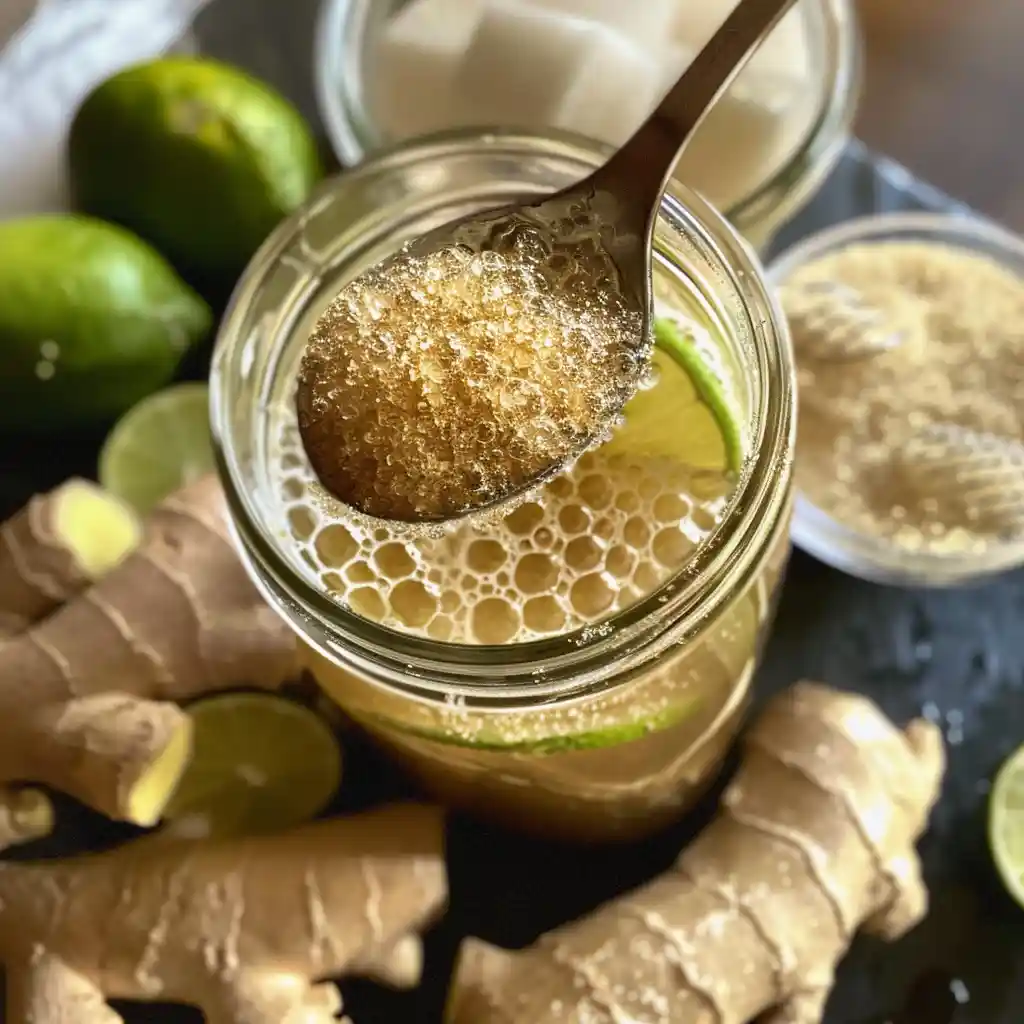
Each batch becomes its own adventure. Sometimes my probiotic soda is fruity and floral, other times it’s warm and spiced. It always feels like a drink with purpose. If you’ve been buying bottled health sodas, this homemade version will blow your mind.
Don’t miss our Fermented Probiotic Lemonade Guide for another easy recipe that follows the same living-drink philosophy.
Tips for Safe Fermentation and Storage
Making probiotic soda is fun, but let’s be real—fermentation can feel intimidating at first. If you’re like me, you’ve probably wondered, “Did I do this right?” or “Is this safe to drink?” I’ve been there. But with a few smart habits, you can brew with confidence and keep your soda fresh, bubbly, and gut-friendly.
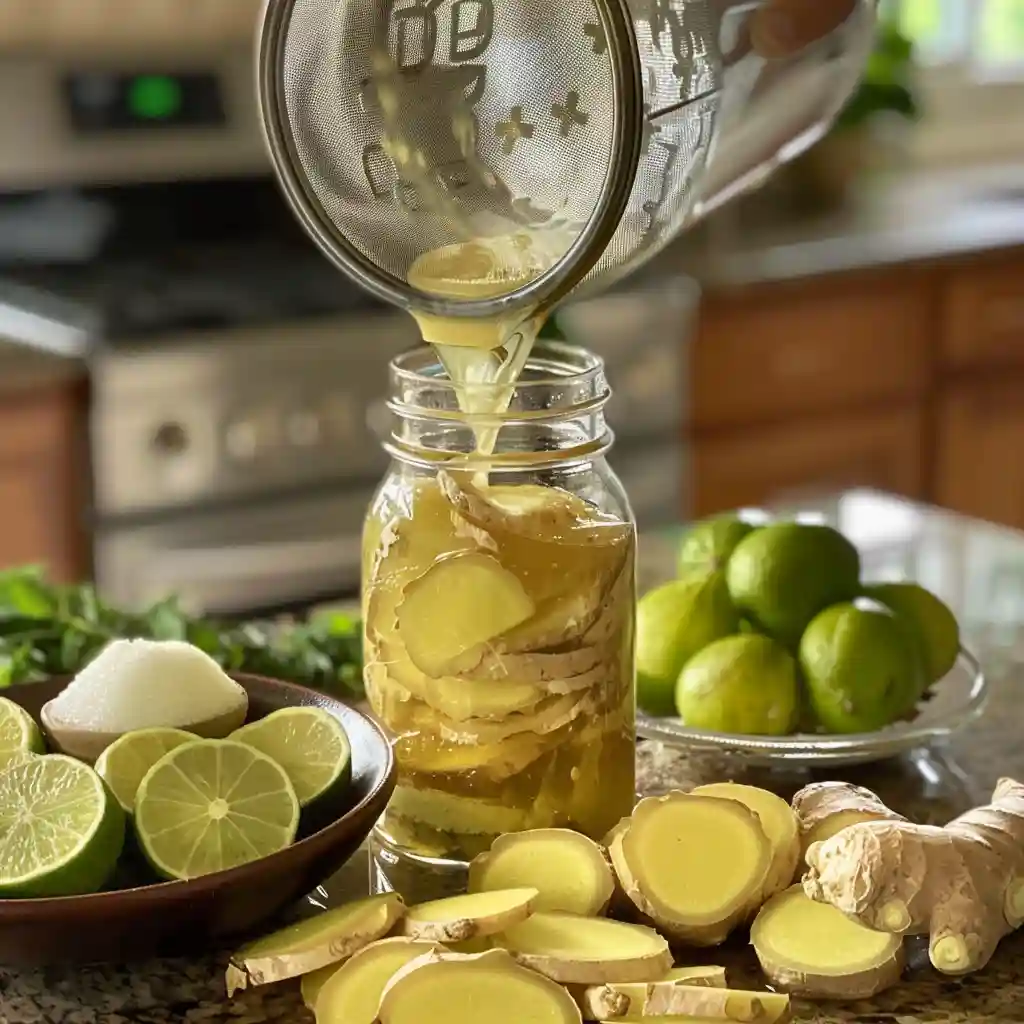
How Long Does Homemade Probiotic Soda Last?
Once bottled and refrigerated, probiotic soda can last about 1 to 2 weeks. That said, it’s best enjoyed within the first 5 days when the fizz is at its peak and the flavor is vibrant. After that, the carbonation may continue building, especially if you used a strong ferment like ginger bug. Always open bottles slowly and over a sink—you never know when a wild fizz explosion might surprise you.
In my experience, storing probiotic soda in the fridge with a tight seal helps preserve its quality. If it smells off, tastes sour in a weird way, or shows signs of mold, it’s better to toss it and start fresh. Trust your senses.
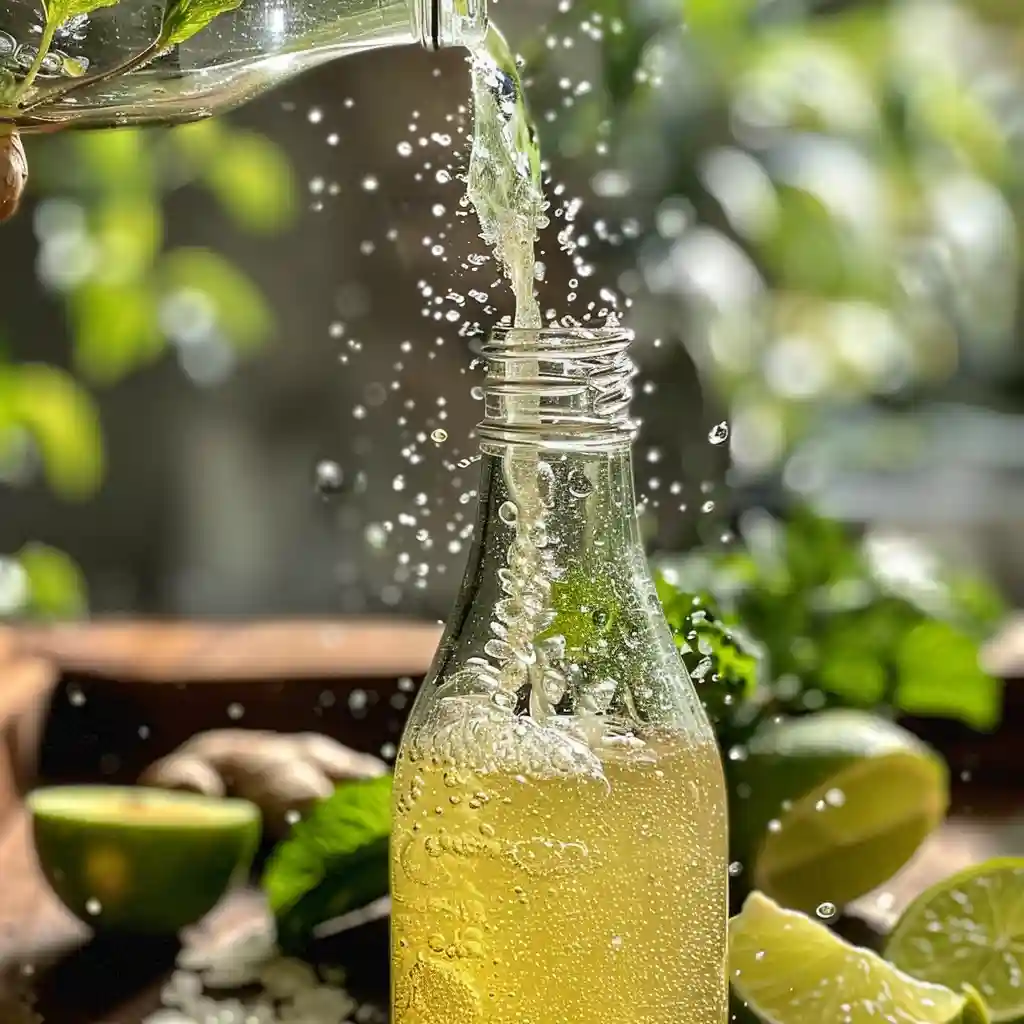
Signs It’s Gone Bad (And What to Do About It)
It’s rare, but sometimes a batch of probiotic soda doesn’t turn out right. Maybe the jar wasn’t clean, the sugar ratio was off, or fermentation lasted too long in warm weather. Look for these warning signs:
- A rotten, unpleasant odor (not the usual tart or yeasty smell)
- Mold floating on top (fuzzy, white, green, or black)
- No carbonation even after 3–4 days
If anything feels off, I always recommend erring on the safe side. The good news? These issues are usually easy to fix. Sanitize your tools well, follow consistent ratios, and keep a fermentation journal to track what works best.
The more batches you make, the easier it gets. Before long, brewing probiotic soda will become second nature. And when you open that bottle and hear that soft “pop”—you’ll know it’s worth it.
Looking for inspiration? Try our fruity Italian Soda Drink Recipe and give it a probiotic twist using ginger bug or kefir as a starter.
Can You Drink Probiotic Soda Every Day?
When something tastes this good, it’s natural to wonder—can I drink probiotic soda every single day? I’ve asked myself the same thing, especially during summer when a chilled, fizzy jar seems to call my name from the fridge. And while everyone’s needs are different, my personal take is yes—within reason.
Daily Dosage Considerations
Most days, I enjoy one glass of probiotic soda, usually with lunch or as a mid-afternoon refresher. For me, it’s just enough to enjoy the flavor and give my gut something gentle to work with. Since this drink is alive with beneficial microbes, moderation helps your body adjust without overdoing it. Especially if you’re new to fermented foods, start small. A few ounces a day is a great beginning.
I treat probiotic soda like a wellness habit—not a cure-all or a replacement for water or meals. I also rotate my flavors to include different fruits and herbs, which keeps things fun and introduces variety into the kinds of bacteria and yeasts in each batch.
Balancing Probiotics with Diet
Even a natural drink like probiotic soda works best as part of a balanced diet. I pair mine with high-fiber meals—salads, grains, or roasted veggies—so the good bacteria have something to feed on and thrive. If I’ve had other fermented foods that day, like yogurt or kimchi, I might skip the soda just to give my gut a little breathing room.
Also, keep an eye on your sugar intake. While most of the sugar gets consumed during fermentation, a sweeter probiotic soda may still carry some residual sweetness. If you’re watching your sugar, let the second fermentation go a bit longer to reduce what’s left.
In the end, it’s all about listening to your body. My experience with probiotic soda has been overwhelmingly positive—it’s a small, joyful ritual that adds both flavor and potential benefits to my routine. If you’ve been thinking about sipping it daily, just start slow and see how your gut feels. Your body will usually tell you what’s working.
Prebiotic vs. Probiotic Soda – What’s the Difference?
I used to think probiotic soda and prebiotic soda were the same thing. Both had “biotic” in the name, right? Turns out, they serve very different roles—and knowing the difference changed how I approach gut health in my daily routine.
Understanding the Role of Prebiotics
Let me share a quick moment from a recent trip to a local health market. I picked up a can labeled “prebiotic soda,” thinking it was the same fizzy goodness I made at home. But after a few sips, I noticed something—it was lighter, less tangy, and definitely lacked the bold, fermented character of my usual probiotic soda.
That’s because prebiotic sodas feed your existing gut bacteria using ingredients like inulin, chicory root fiber, or oligosaccharides. They don’t contain live cultures. Instead, they act as food for the good bacteria already in your system.
So, while probiotic soda introduces beneficial bacteria through fermentation, prebiotics help nourish them. One adds, the other supports. I like to think of them as teammates.
Should You Mix or Alternate Them?
I’ve started incorporating both into my routine. Some days, I’ll drink a homemade probiotic soda around lunchtime. On others, I reach for a prebiotic option, especially if I’ve had lots of fermented foods already.
Mixing both can be a smart way to support a diverse gut environment. From my experience, alternating lets my digestive system reset and avoids the overload that can happen when I go too heavy on one type. Plus, it gives me more room to explore flavors and ingredients I wouldn’t normally use in just one kind of soda.
Still, if I had to choose just one, probiotic soda would always win. It’s homemade, alive, and full of character. It changes slightly with every batch, which I love. And more than anything, it feels like a creation—not a product. If you’re curious about both, give each a try and see how your body responds. Like so many wellness habits, the best guide is your own experience.
Best Flavor Combinations to Try
Experimenting with flavors is where probiotic soda really becomes an art form. I’ve had batches that tasted like fruity sunshine, and others that reminded me of cozy winter nights. There’s no one right way to flavor your soda—just combinations that light you up.
Fruity Favorites: Berries, Citrus, Pineapple
One of my go-to bases for probiotic soda is pineapple and mint. It’s sweet, tropical, and the mint gives it a cool, refreshing finish. When I want something bold and tangy, I toss in a handful of raspberries with a splash of lemon juice. The result is a deep red fizz that feels like summer in a bottle.
Another favorite? Orange-ginger. I make it with fresh orange slices, grated ginger, and a bit of cinnamon. It’s bright, zesty, and slightly spiced—a combo that balances well with the natural tang of fermented soda.
All of these fruits add natural sugars, which the bacteria in probiotic soda feed on during fermentation. That’s how you get that beautiful natural fizz, with a flavor that’s layered and never artificial.
Herbal and Floral Blends: Lavender, Mint, Hibiscus
When I’m craving something light and calming, I turn to herbs and flowers. Lavender and chamomile create a delicate base for a floral-forward probiotic soda that’s lovely in the evening. For a burst of color and tang, hibiscus petals steeped with apple or pomegranate juice work beautifully.
Mint pairs with just about anything—it adds brightness and depth, especially when combined with citrus or cucumber. I also like adding fresh basil to strawberry soda for a subtle, earthy edge.
The key is to experiment in small batches. Keep notes, try seasonal ingredients, and let your senses lead the way. The beauty of probiotic soda is that no two batches are ever quite the same. And once you find a favorite blend, it’s like discovering a flavor you didn’t know you were missing.
If you love playing with flavor like I do, don’t miss our fun Fruit Punch Soda Recipe—a perfect canvas for your next probiotic twist.
Probiotic Soda vs. Kombucha – Which One Fits You Best?
Before I started making probiotic soda, I was deep into the world of kombucha. It was fizzy, funky, and came in endless flavors. But after a while, I wanted something simpler—less vinegary, quicker to brew, and easier to customize. That’s how I stumbled into soda fermentation, and honestly, it changed everything.
Taste, Effervescence, and Benefits Compared
Kombucha has a strong, distinct flavor—slightly sour, sometimes sharp. That tang comes from acetic acid, which develops as the tea ferments longer. On the flip side, probiotic soda is milder, fruitier, and less acidic. It has a clean fizz, often with floral or citrus notes, depending on your ingredients.
In terms of fizz, both drinks bring the bubbles, but in different ways. Kombucha’s carbonation is often stronger after its second ferment, while probiotic soda gives you gentler, softer effervescence. It’s more refreshing, less aggressive. That’s why I now reach for my homemade soda when I want something light but still alive.
Both drinks can offer similar benefits—they contain living bacteria that may support digestion and gut health. But probiotic soda has the added advantage of being caffeine-free, especially since kombucha is usually brewed with black or green tea.
Which Is Easier to Make at Home?
If you’ve ever babysat a SCOBY (kombucha’s jelly-like culture), you know it requires a little commitment. It’s sensitive to temperature, needs sweet tea, and takes 7 to 10 days to brew. Probiotic soda, on the other hand, comes together in as little as 48 hours and doesn’t require any fancy equipment.
You also don’t need to maintain a culture. A ginger bug or kefir starter can be made as needed, and you can flavor your batches however you like—berries, herbs, even spices. For beginners, probiotic soda is a far gentler entry into fermentation. It’s less intimidating and way more forgiving.
So, which should you choose? I keep both in my fridge from time to time, but soda has become my daily favorite. It’s less sour, more fun to tweak, and faster to make. If you’re curious, start with soda. And who knows? You might end up like me—hooked on the bubbles and never looking back.
FAQs: All Your Questions About Probiotic Soda Answered
Over the years, I’ve gotten tons of questions from friends, family, and readers who are curious—but cautious—about drinking probiotic soda. And I get it! It’s a new concept for many, and there’s a lot of confusion out there. Here’s what I’ve learned from both research and firsthand experience.
How long does homemade probiotic soda last?
Once refrigerated, a well-fermented probiotic soda usually lasts 1 to 2 weeks. That said, the flavor continues to evolve. I personally like drinking it within the first 4–5 days, while it’s still bubbly and fresh. If stored properly, it stays safe, but watch for signs like sour odors or lack of fizz—those could mean it’s time to toss it and start fresh.
Remember, every gut is different. What works beautifully for me may feel different to you. The key is to listen to your body and stay consistent. And when in doubt? Start small. One glass of probiotic soda a day goes a long way in building a gentle wellness habit.
Conclusion: A Bubbly Journey to Better Gut Health
Looking back, I never imagined a simple jar of bubbling liquid on my kitchen counter would spark such a fulfilling routine. But that’s exactly what happened with probiotic soda. What started as a curiosity turned into a daily wellness habit—one I actually look forward to.
The process of brewing probiotic soda is more than just a recipe. It’s hands-on, creative, and alive. I get to play with fruits, herbs, and spices, crafting flavors that feel seasonal and personal. And the benefits? A lighter gut, less bloating, and that satisfying pop every time I open a chilled bottle.
If you’re someone who struggles with sugary cravings or soda addiction, probiotic soda might be the perfect swap. It satisfies that need for fizz without loading you up on preservatives or mystery ingredients. Plus, you’re building something that could help support your gut microbiome—a win in my book.
This isn’t a trend or a temporary fix. It’s a gentle, sustainable ritual that grows with you. So if you’re standing in your kitchen, wondering if you can make probiotic soda at home—yes, you can. And trust me, it’s worth it.
Check out our deliciously fizzy Dirty Soda Recipes for more ways to flavor your sodas. Want to connect or share your creations? Follow me on Facebook and Pinterest where I post updates, new blends, and real kitchen stories every week.
